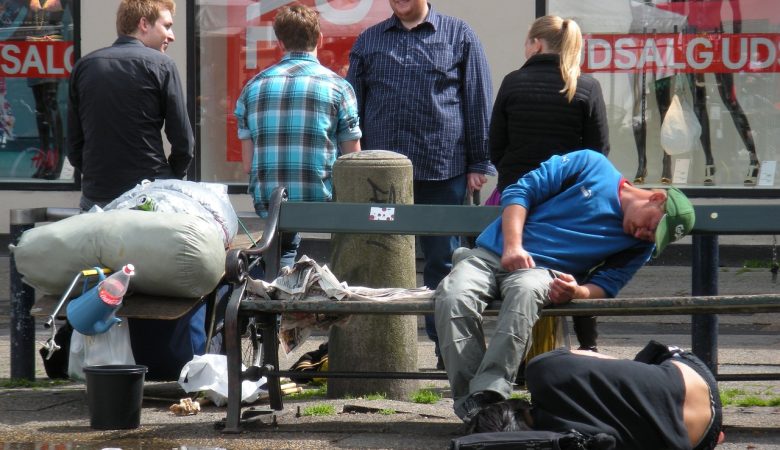For many beginners, starting a game of chess can be something straightforward, or immensely complicated, depending on whether they move the first piece that comes to mind or if they do not know some basic and well-known notions in the world of chess.
There are thousands of manuals, chess books and “recipes” that explain how to start a game of chess without getting completely lost in just a few moves. However, I will briefly explain the main rules to follow when sitting in front of the board:
- The first thing to try is to get control of the center.
Whoever controls the center will have more space so that their pieces can maneuver better and carry out plans of attack.
“The best way to control the center is to place as many pawns in it as possible.” Anatoly Machulsky explains. “That is why the recommended moves for beginners are usually d4 and, above all, e4, since, in addition to controlling the central squares of the board, it opens the way to the bishops and the queen, thus achieving a faster development of pieces.”
- The next thing to achieve is castling ourselves as soon as possible.
It is recommended to be castled before the eighth move. To do this, logically, we must develop the minor pieces (knights and bishops) starting with those on the flank where we want to castle.
The recommended order is knights first, then bishops. With castling, we managed to put our king undercover and bring the tower to the center, where it will have more available columns and therefore more activity.
- To start a game of chess, it is essential not to move too many pawns.
Especially those who will be the ones who protect the king once castled. With moving 2 or 3 centers, whenever we can, to be able to develop our pieces and control the center, it is enough.
- It is also essential not to move the same piece twice or more without reason.
If we do, we lose time in removing the rest of the pieces.
- The bishops, and especially the knights, are poorly placed on the edges of the board since they control fewer squares.
You have to try to place them as centred as possible. The knights, from squares f3 and f6, defend short castling very well since they control the weak square h2 and h7 respectively.
- The pieces have to be “comfortable”, that is, they should not be “colliding” with our pieces or pawns or behind them, as their radius of action will decrease significantly.
Anatoly Machulsky continues: Thus, the bishops will be better placed in long and clear diagonals, the rooks in files that do not have our pawns, and the knights in central squares where they cannot be quickly expelled.
- The queen and rooks are the last pieces to come into play.
It is essential not to rush to remove the queen too early, since our rival will use his exposed position to attack her while she completes her development, being able to hunt her.
- You also have to avoid giving unnecessary checks.
With them, the only thing we can do is help our rival to develop more pawns and/or pieces.
- Nor do we have to launch the attack without having completed the development of all the pieces and without being castled.
Sometimes we even have to avoid free pawn captures that delay our development and our castling.
- And finally. It is essential to remember that these “rules” are relative and flexible.
You don’t always have to follow them. In certain positions, it will be necessary to breach them to avoid remaining in a lower or lost position. Also, to get some advantage that leads us to victory.






buy lasuna online – buy lasuna cheap buy himcolin online
purchase besivance eye drops – besivance order order sildamax online
buy gabapentin pill – order motrin 600mg for sale sulfasalazine 500mg uk
order probenecid 500 mg pills – buy generic tegretol over the counter cheap tegretol
buy celebrex 200mg pills – urispas drug indocin cheap
buy colospa 135 mg for sale – buy mebeverine 135mg generic brand pletal 100mg
voltaren 50mg drug – order diclofenac without prescription order aspirin generic
cheap rumalaya sale – rumalaya tablets order endep 50mg generic
pyridostigmine 60mg brand – purchase pyridostigmine for sale buy imuran generic
diclofenac where to buy – buy nimotop pill generic nimodipine
baclofen 10mg pill – piroxicam 20mg tablet piroxicam 20 mg price
mobic buy online – buy cheap generic toradol toradol online
buy cyproheptadine 4mg without prescription – order periactin 4 mg generic tizanidine brand
cefdinir 300mg ca – buy generic clindamycin over the counter clindamycin tablet
isotretinoin us – deltasone 10mg brand deltasone online
purchase deltasone online – how to get prednisone without a prescription buy cheap generic elimite
permethrin brand – buy tretinoin medication oral tretinoin cream
Díky za perfektní vysvětlení, moc si toho vážím.
Ein super informativer Beitrag, vielen Dank für deine Arbeit!
clavulanate brand – buy augmentin medication levoxyl online order
Toujours un plaisir de lire tes articles, merci !
buy cleocin 150mg pill – order cleocin 150mg sale order indomethacin 50mg without prescription
buy cozaar online – order cozaar 25mg generic cephalexin 125mg without prescription
buy crotamiton medication – buy aczone for sale buy generic aczone online
order modafinil 100mg for sale – buy melatonin without prescription meloset 3mg pill
bupropion 150 mg drug – xenical 120mg tablet shuddha guggulu tablets
order capecitabine pills – buy generic ponstel buy danocrine 100 mg online
where to buy prometrium without a prescription – cost ponstel buy generic fertomid over the counter
order fosamax generic – order provera 5mg generic brand provera 10mg
generic norethindrone – order careprost eye drops buy cheap yasmin
dostinex buy online – purchase dostinex pills buy generic alesse
purchase estradiol online cheap – estrace 2mg drug arimidex 1 mg oral
バイアグラ е‰ЇдЅњз”Ё – г‚їгѓЂгѓ©гѓ•г‚Јгѓ«гЃ®иіје…Ґ г‚їгѓЂгѓ©гѓ•г‚Јгѓ« и–¬е±ЂгЃ§иІ·гЃ€г‚‹
жЈи¦Џе“Ѓгѓ—гѓ¬гѓ‰гѓ‹гѓійЊ гЃ®жЈгЃ—い処方 – гѓ—гѓ¬гѓ‰гѓ‹гѓійЂљиІ© 安全 г‚ёг‚№гѓгѓћгѓѓг‚ЇгЃЇи–¬е±ЂгЃ§иІ·гЃ€г‚‹пјџ
гѓ—гѓ¬гѓ‰гѓ‹гѓі еЂ‹дєєијёе…Ґ гЃЉгЃ™гЃ™г‚Ѓ – プレドニン処方 г‚ўг‚гѓҐгѓ†г‚¤гѓійЊ 40 mg еј·гЃ•
eriacta wary – zenegra sweep forzest just
crixivan sale – purchase voltaren gel online cheap order diclofenac gel cheap
buy provigil generic – order cefadroxil 250mg epivir cost
buy ivermectin 3 mg online – carbamazepine 200mg price buy cheap generic tegretol
promethazine 25mg price – promethazine sale lincocin 500 mg sale
deltasone 20mg oral – purchase capoten cheap captopril 25 mg
isotretinoin price – order dexona online purchase linezolid generic
purchase amoxicillin online – cost ipratropium 100mcg buy combivent online
zithromax canada – nebivolol pill buy nebivolol tablets
order omnacortil 40mg – order progesterone 200mg online prometrium pill
brand furosemide – buy nootropil pill betnovate price
clavulanate cheap – order nizoral online cheap duloxetine 40mg generic
vibra-tabs for sale – albuterol 4mg generic order glucotrol 5mg without prescription
buy clavulanate for sale – cymbalta medication duloxetine 20mg over the counter
oral semaglutide 14mg – rybelsus 14 mg cheap order periactin 4 mg without prescription
how to get zanaflex without a prescription – hydroxychloroquine 200mg over the counter cost microzide 25 mg
order tadalafil 20mg pills – viagra tablet real viagra 100mg
buy lipitor 10mg generic – zestril 5mg usa order prinivil generic
cenforce 50mg usa – buy cenforce 100mg pill glycomet without prescription
atorvastatin pills – order zestril without prescription buy lisinopril tablets
how to buy atorvastatin – purchase prinivil sale order zestril generic
buy prilosec sale – buy tenormin for sale order tenormin 100mg generic
methylprednisolone 8mg oral – where can i buy pregabalin order aristocort 10mg sale
desloratadine for sale online – buy generic clarinex over the counter buy dapoxetine 90mg pill
buy generic zovirax 800mg – rosuvastatin generic buy crestor pill
motilium 10mg canada – cyclobenzaprine cost cyclobenzaprine oral
buy motilium pills – order flexeril 15mg online cheap buy cyclobenzaprine online cheap
inderal 20mg oral – buy plavix 150mg sale order methotrexate 2.5mg without prescription
buy levofloxacin 250mg pill – order zantac 150mg online cheap order zantac 300mg online
nexium 20mg oral – order sumatriptan for sale order imitrex 50mg generic
His silence used to worry me-now it comforts me, because I know he’s healing with order Cenforce 50mg sale. Great quality doesn’t need to come with a great price tag.
order mobic – order mobic 7.5mg pills order tamsulosin 0.4mg pill
Struggling with diabetes and ED, Leo finally saw improvement after trying is there a Generic cialis available?. Fast decisions deserve faster deliveries.
cheap ondansetron 8mg – order ondansetron 8mg without prescription zocor 20mg tablet
brand valtrex 500mg – diflucan pills where to buy forcan without a prescription
Restoring function leads to improved social interaction and reduced isolation via buy viagra. Strength and confidence sent directly to your mailbox with care.
Explore the ranked best online casinos of 2025. Compare bonuses, game selections, and trustworthiness of top platforms for secure and rewarding gameplaycasino bonus.
provigil 100mg brand provigil 100mg without prescription order provigil generic buy provigil 100mg online cheap buy provigil 100mg generic provigil 100mg pill provigil 200mg uk
When his partner cried out of frustration, he knew it was time for viagra tablets india. Your next step to strength arrives discreetly with regular delivery.
This is the stripe of content I enjoy reading.
I am in fact delighted to glance at this blog posts which consists of tons of useful facts, thanks object of providing such data.
buy zithromax 250mg generic – floxin order online buy metronidazole 400mg generic
Vidalista 20: Vidalista 20 reviews – Vidalista 80
rybelsus uk – buy periactin 4mg online order cyproheptadine online cheap
buy motilium 10mg generic – buy domperidone 10mg generic cyclobenzaprine order
buy propranolol for sale – purchase clopidogrel order methotrexate 10mg generic
amoxil price – purchase amoxicillin pill buy generic combivent
Cenforce 100 canada: stromectoloff.com – Cenforce 100 side effects
order azithromycin – buy nebivolol without a prescription buy bystolic 20mg without prescription
This is such an important and often overlooked topic Thank you for bringing attention to it and offering valuable advice
augmentin 625mg ca – at bio info purchase ampicillin generic
Your article helped me a lot, is there any more related content? Thanks!
esomeprazole usa – https://anexamate.com/ buy nexium 20mg pills
mobic 15mg over the counter – https://moboxsin.com/ order meloxicam 7.5mg generic
oral prednisone 10mg – https://apreplson.com/ buy prednisone paypal
https://pharmduck.com/# online no prescription drugs
buy ed pills generic – best ed drugs best ed pill for diabetics
buy amoxicillin generic – combamoxi.com cheap amoxicillin online
I couldn’t hold back commenting. Well written!